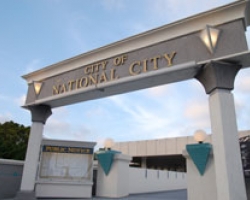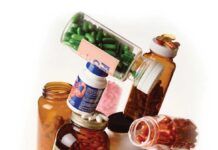The Port of San Diego held a meeting on May 6 in English, Spanish and Tagalog to gather public input on their “latest design effort aimed at establishing a grand vision for Pepper Park”. A few phrases repeatedly came up: community, equity and education, all of which spoke to a park redesign that has potential to redesign the park with an eye toward components like renewable energy and flexible use spaces.
Port Commissioner Sandy Naranjo said the park redesign, which includes a 2.5 acre expansion born from a land rebalance plan dating back to 2016 offers a chance to correct inequities, “a modest measure but one with so much potential”.
KTUA Principal Planner Mike Singleton broke down how the planning and landscape firm has divided plans for the park into four layered sections to keep redesign efforts manageable.
Those four sections include: park areas that will remain in place, infill areas where components can be modified or improved, the park expansion area and coastal access areas.
Singleton used the word ‘local’ as an acronym for where the park might undergo changes: the ‘location’ of ‘opportunities’ for items like a possible water shuttle or sustainable energy center, ‘constraints’ such as immovable highway locations, ‘assets’ like current bathrooms and mature trees and ‘limitations’ such as windy areas and proximity to large vessels that might prevent water access.
He also mentioned ongoing and related transportation projects like Bayshore Bikeway improvements and a water taxi study that are not part of the park redesign but are worth considering in conjunction with park ideas.
Attendees were split into breakout rooms where suggested items were used as a jumping off point to gather feedback and solicit new ideas. For example, the Active Improvements breakout session featured photos of exercise spaces and jogging paths but one attendee suggested expanding open lawns because “we especially want to hear about flexible spaces for activities like tai chi” while another wanted consistent lighting for evening runs.
Passive Water areas might include a perched beach, stepped seating as a way to get closer to the water in easy increments while Event Area Improvements might feature a festival space or a new food building.
Repurposing the current roundabout into a multipurpose gazebo-kiosk earned support from several attendees, as did group picnic areas.
Port and KTUA staff will develop a plan for next steps in the design process while the Port staff finalizes the corresponding Environmental Impact Report.
Additional suggestions for the park can be submitted to: NCBayfront@portofsandiego.org through May 24 or by calling Anna Buzaitis at (619) 686-7263.















